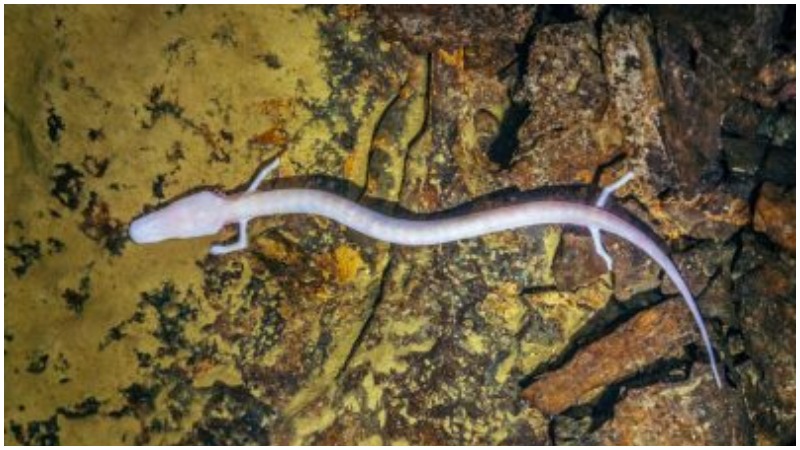There are three sites that will, without doubt, make everyone’s trip to the southwest of Slovenia more than worthwhile, and ensure the experience is magical and truly spectacular.
Dubbed the “Underground Grand Canyon,” Škocjan Caves, a cave system near the Italian border, has a small yet enchanting underground waterfall, a cliff-hanging pathway half hidden in a thick mist created by an emerald green river that flows 400 feet below the walker’s feet, and a 50-feet footbridge hung high over the abyss.
It is the largest known underground canyon and could easily be Dante’s Inferno. Or the scene of the fan favorite’s “You shall not pass!” Lord of the Rings duel between Gandalf and the Balrog; this mystical underworld with the Cerkvenik Bridge suspended in mid-air is certainly vast enough to compare with the mines of Moria and Khazad-dum.
The caves are, fortunately, demon free. This rare otherworldly gem of nature of universal importance, no less extraordinary than the Grand Canyon, the Great Barrier Reef, the Galapagos Islands, and Mount Everest, is a protected UNESCO World Heritage site, just as the aforementioned ones, and it’s the first must-see place on the list.
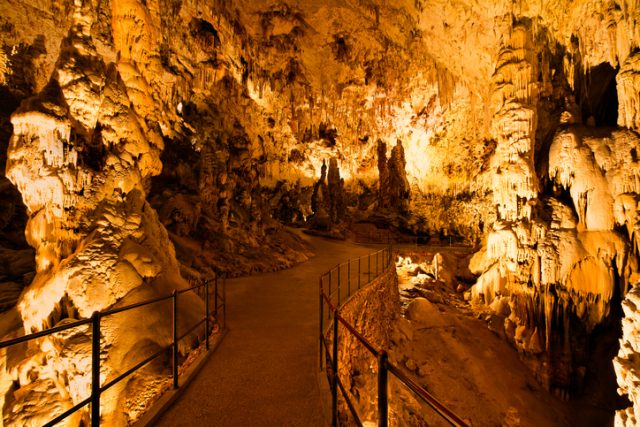
Not far from this beautiful underground realm, just 18 miles to the northeast, is Predjama Castle, the largest cave castle in the world, according to the Guinness Book of World Records, is the next stop in line.
The 13th-century medieval castle truly amazes everyone standing before its striking grandeur. Charming, enigmatic, and, according to local legend, virtually impregnable, it was built directly into a cave mouth. Blending seamlessly with the rock face, it has served as a safe haven for more than 800 years. The castle’s most famous owner, Erazem Lueger, is said to have been besieged for a full year following a disagreement with the powerful Hapsburgs that escalated into a minor battle.
It transpired that, far from surviving all that time without fresh supplies, the castle was connected to a network of tunnels that provided plenty of routes for sneaking food in, and there was even an underground river to supply fresh water.
One of those tunnels leads right to our third and final destination: Postojna Cave.
Just over five miles to the south of the castle, the “queen of caves” was opened as a tourist destination after a visit by Emperor Francis I of Austria and his wife, Empress Consort Caroline Augusta, in 1819. By 1872 it was the first cave to boast an underground tourist train–12 years before electric lighting was installed. By many estimations, it is the most visited cave system in the world.
Postojna Cave was discovered by Luka Čeč, a lamplighter who in April 1818, with nothing but a lit lamp and a pocket knife, bravely ventured into the unknown shouting, “Here is a new world, here is a paradise!”
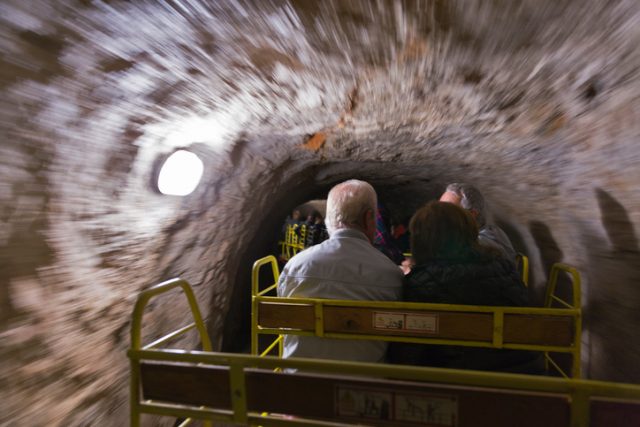
“We saw him standing up there, saw him going further, and could see the glow of his lamp for a while longer. We waited for a good half an hour for this daring man to come back, terribly worried about him, thinking that he must have had an accident.” He did not, of course, but people understandably feared that he might have as they waited in the silence for his return.
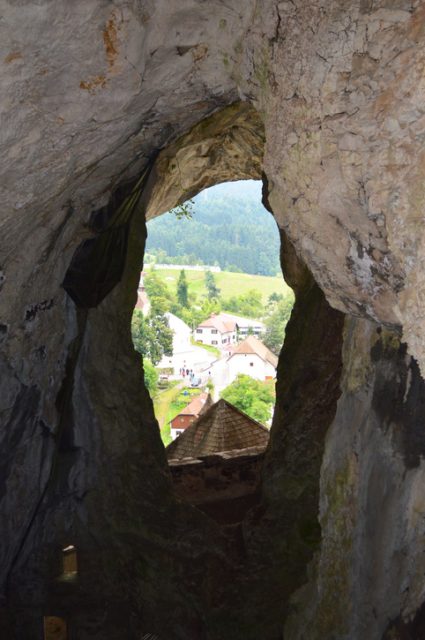
Proir to Čeč’s exploration, it was known that the cave went back a couple of hundred feet; many believed there was much more left to be traversed but no one was ever quite brave enough. Čeč’s lamp revealed there were not just a couple of more steps left unexplored, but a myriad of tunnels, passages, and countless halls. His new underground world, as it turned out, was at least 14 miles of brilliant yet otherworldly paradise.
The depth of Postojna Cave was showcased to the royal family on their subsequent visit, and Čeč was the very first cave guide. Lit dimly with torches back then, the cave had gigantic stalagmites rising from the floor like skyscrapers, some up to 50 feet tall. Today, perfectly illuminated, these subterranean giants create a divine forest-like spectacle. To date, 38 million people have walked inside the tunnels.
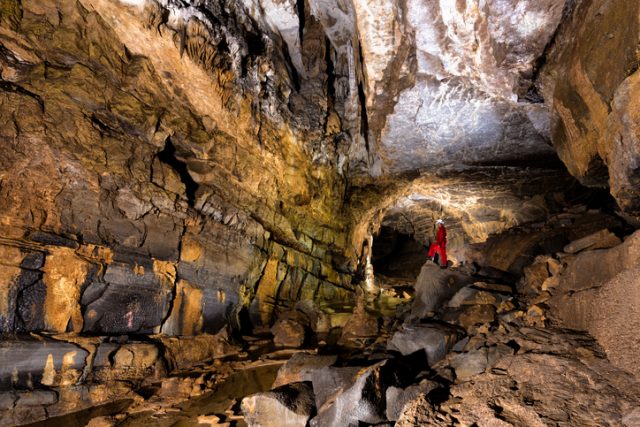
One of the grand chambers, known as the Concert Hall, has long been used as a venue for large meetings and concerts. The million-year-old stalactites overhead and other natural limestone features make for a unique experience and wonderful acoustics. Perhaps this is why it was the go-to place for Benito Mussolini, Emperor Franz Joseph of Austria, and Archduke Ferdinand I.
But far beneath the ground, there is the one thing that makes this cave truly unique. It’s not the railroad, nor the great illuminated halls. Not even the walls adorned with prehistoric drawings from people that used the karst as а shelter. It’s what supposedly drove them away, into the wild and out in the open.
According to local lore, inside these caves lurks a dragon. And the extraordinary creatures that would sometimes be washed up onto the surface after heavy rains are its babies.
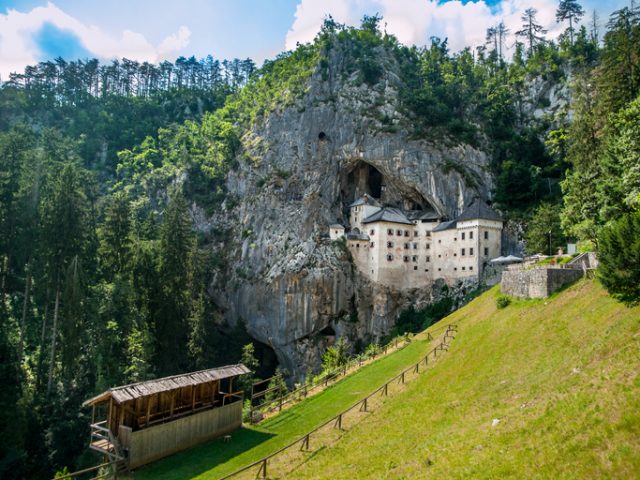
Living 400 feet underground in pitch black darkness, an eel-like salamander lives and breeds in the puddles in the innermost sections of the cave. The olm, Proteus anguinus, has been found nowhere in the world outside of the underground river systems that flow through the karst of Central and Southeastern Europe. It is the largest known cave-dwelling animal and is perfectly adapted to subterranean life.
It is one of at least 150 animal species that live inside the cave system, so the predatory creature has no shortage of food. It can, however, survive up to eight years without a meal. Since Proteus was first recorded by Johann Weikhard von Valvasor, it has become known the “human fish” due to its almost translucent, pale-fleshy colored complexion.
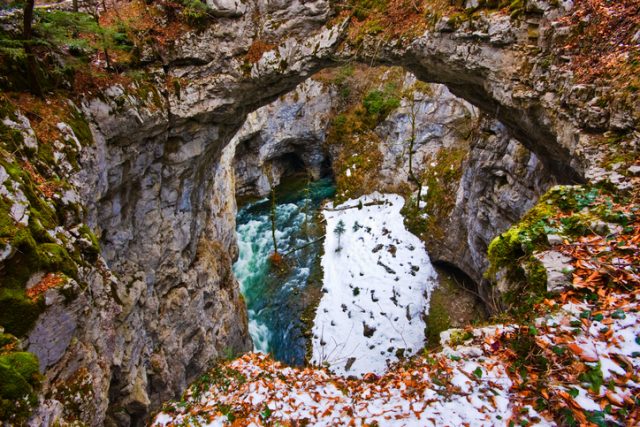
Its unusual appearance captivates everyone’s imagination. It is after all one of the most unusual looking creatures in the world without a doubt. Perhaps baby dragon is not such a bad description after all, as in its adult form, Proteus still resembles a fetus. It is a vertebrate yet has gills, and its eyes remain undeveloped, relying on sound and smell to navigate and hunt. Proteus even lives as long as a dragon might–up to 100 years.
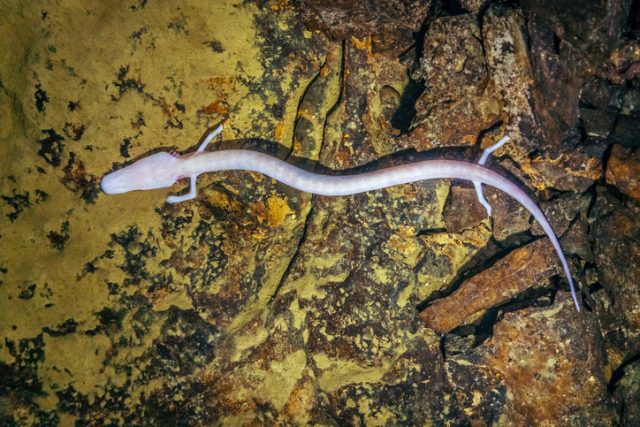
The snake-like body, which reaches about a foot in length, has two pairs of legs with an unusual number of digits. Due to the lack of certain pigmentation, it is possible to make out its internal organs through the translucent skin, and the gill-tufts appear red.
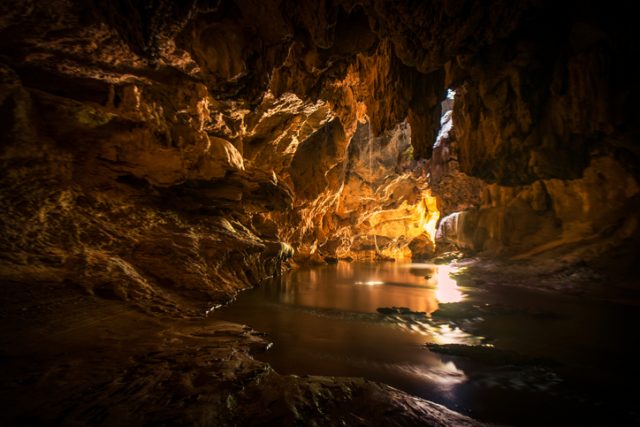
Our friend Luka Čeč was the first to discover a unique species in his cave, kick-starting a new branch of science, speleobiology, in 1831. At least 120 endemic species have now been found inside the cave’s recesses in Postojna. They are all precious and this unearthly predator feasts on them all.
Sadly, like so many other species, the creatures in this delicate ecosystem are in danger. Polluted rivers reaching inside the karst pose a real threat for them. Let’s hope this last living dragon will survive us.
